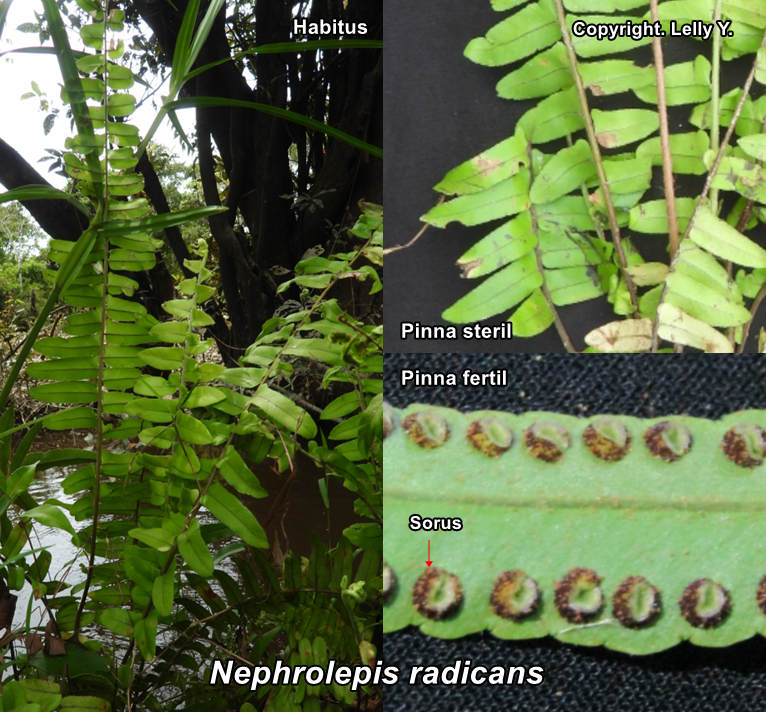Nephrolepis radicans
(Burm.f.) Kuhn
Polypodiaceae
Nama : Paku-pakuan.
Deskripsi : Terestrial atau epifit, terkadang litofit. Ental bercangap menyirip, tegak, kehijauan, rakis biasanya terdapat sisik, kecoklatan muda-tua; anak daun melanset, ujung anak daun meruncing samapi membundar, tersusun berseling, tepi anak daun bergigi; ental steril dan fertil tidak memiliki perbedaan bentuk; ental fertil pada helaian anak daun terdapat sori. Sorus bulat, sori melekat pada bagian bawah anak daun, tersususn di dekat dengan tepi daun, hijau sampai kehitaman.
Ekologi : Persebaran alami dari wilayah Nepal bagian Timur sampai Kaledonia Baru, termasuk Indonesia (terkecuali Sulawesi dan Maluku). Pada umumnya tumbu pada substrat tanah dan terkadang ditemukan epifit pada pohon-pohon besar. Tumbuh pada lahan kering dan substrat yang lembab atau didekat sumber air. Tumbuh di bawah kanopi atau dominan pada lahan terbuka. Referensi: Piggot, 1996.
Kegunaan : –

